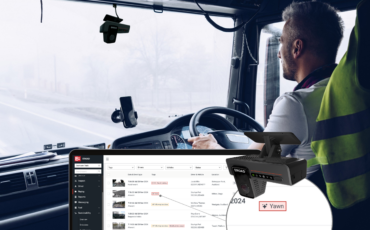How an Electronic Logbook can drive down your FBT costs
How an Electronic Logbook can drive down your FBT costs
When it comes to calculating your fringe benefits tax (FBT), many businesses typically use the statutory method as it’s easier to calculate and doesn’t rely on keeping detailed logbooks.
But with the gradual introduction of a flat FBT rate of 20% under the statutory method, some businesses could now be unwittingly paying more than they should for their FBT.
Have you ever stopped to look at whether the FBT method you’re using is still the right one for your business?
How to calculate your FBT
There are two ways to calculate Fringe Benefits Tax for motor vehicles:
- The statutory formula method, which is based on the car’s cost price
- The operating cost method, which is based on the costs of operating the car
The taxable value of a car fringe benefit is designed to reflect an employee’s ‘private use’ of the vehicle, as only the private use of the car is subject to FBT. Additionally, the FBT law allows ‘employee contributions’ to reduce the taxable value of the car’s Fringe Benefits Tax.

How technology can help save on your FBT costs
The advantage of the operating cost method is that it provides for a lower taxable value when employees use their cars regularly for work purposes i.e. when they use the car a lot more for work than privately, you pay less in fleet FBT.
Understandably, using paper-based logbooks can quickly become an administrative nightmare. However, with technology advances, such as EROAD’s Electronic FBT Logbook, capturing journey data is now extremely simple and could save you money. It complies with all the Australian Taxation Office’s (ATO) requirements under the operating cost method.
In effect, it automates the entire logbook process to record time, data, mileage and the nature of the trip at the touch of a button – saving significant time and money. No more filling in paper logbooks and hours of admin!
One of the key benefits of using an Electronic FBT Logbook aside from potentially saving time and money on your FBT, is that it can also help run your business more efficiently. EROAD’s cloud-based telematics platform provides businesses with analytics for a safer, more efficient and compliant business.
EROAD’s Electronic FBT Logbook gives you peace of mind that data and the purpose of all travel in a work vehicle is being automatically recorded at the touch of a button.

How EROAD’s Electronic FBT Logbook works
- Drivers enter a passcode when they get in the vehicle, which enables time and distance to be automatically recorded against their name.
- The driver also selects the purpose of their trip – either business or personal – which is then stored in the telematics platform. Unlike a paper logbook, EROAD’s Electronic FBT Logbook can also highlight when a driver hasn’t logged their trip.
- Data is captured in real-time on EROAD’s single in-cab device – Ehubo2 which also records advanced analytics data on a range of other metrics to help with the safety and compliance of your fleet as well as identify areas for efficiencies.
- Once the trip is complete, it is recorded and stored for the requisite period and is quick to recall and audit, when needed.
- Clearly establishing the split between work and private use over any three-month period helps minimise your FBT liability.
EROAD’s Electronic Logbook makes recording vehicle use for FBT easy
With EROAD’s Electronic FBT Logbook, you get to choose a 12-week period to base your FBT return on, as required by the ATO. This is particularly beneficial for work vehicles that often have varying use at certain times of the year. For instance, a house painting company’s vans may be used more for business during the summer months than at other times of the year.
A logbook is then valid for the next five years, provided there is no meaningful change in the business pattern of use.
EROAD’s Electronic FBT Logbook also offers protection if you’re audited. Paper logs are more prone to driver error, which makes an audit more challenging and increases the risk of a logbook being voided. If this happens, the ATO counts all vehicle usage as private, which means your FBT liability goes through the roof. But, with EROAD’s FBT Logbook, data is stored in a secure system – so there’s no room for argument.
Key things to note about Electronic FBT Logbooks
- The rules regarding the use of Electronic Logbooks vary across each region of Australia. In many states, the law requires you to obtain consent from employees well before they get in a car that has a GPS tracking system. In other states, the law does not permit vehicle tracking while an employee is not at work.It is, therefore, vitally important to ensure that, before your company starts using an Electronic FBT Logbook, you are fully aware of the key legal requirements in your jurisdiction area. At a minimum, we recommend that your organisation has a clear policy around tracking vehicle usage, taking into account your employees’ right to privacy when undertaking private trips.
- An employee’s travel to and from home generally doesn’t constitute a work-related trip and would need to be recorded as ‘private use’ in most cases.















